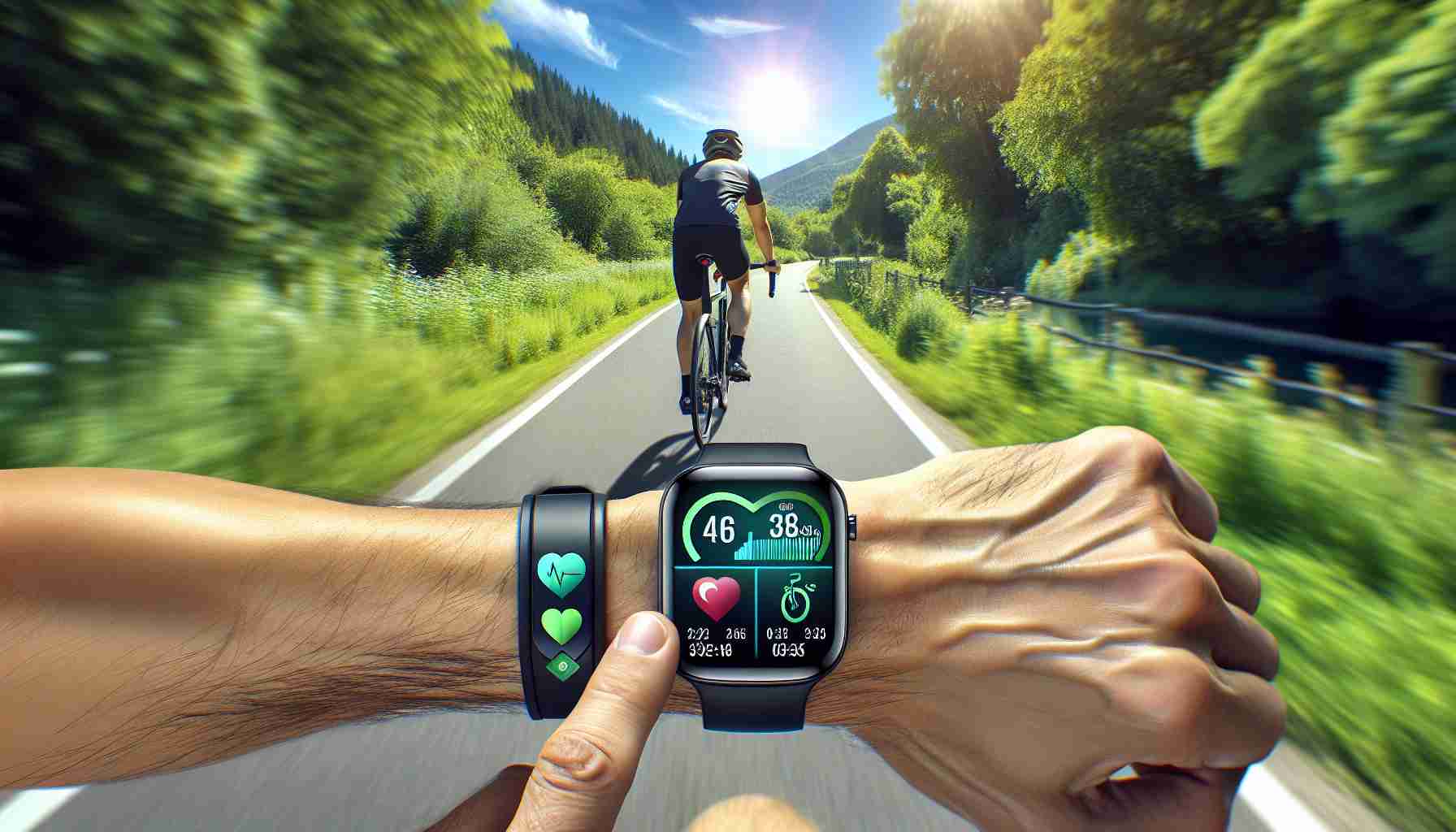Cyclists around the world have found a new ally in their pursuit of an enhanced riding experience – the Apple Watch. Over the past few years, Apple has continuously added features specifically designed for cyclists, and the latest WatchOS 10 update has truly revolutionized the game.
Gone are the days of having to invest in a separate bike computer to track performance and navigate while riding. With the introduction of Live Activities for cycling on the iPhone, cyclists can now access real-time information directly on their smartphone’s lock screen.
By starting an indoor or outdoor cycling workout on the Apple Watch, cyclists can easily view their metrics on the iPhone’s larger screen. This feature is available on any Apple Watch from Series 4 onwards running WatchOS 10 and any compatible iPhone with iOS 17.
One of the most significant advantages of this integration is the added safety it provides. Cyclists can mount their iPhones onto their handlebars and instantly access their cycling stats as a Live Activity, eliminating the need to raise their wrists and potentially lose focus on the road.
Whether targeting specific metrics like speed or heart rate, cyclists can swipe across different screens on their iPhones to quickly access the data they need, all while keeping their eyes on the road.
Furthermore, the Apple Watch offers the invaluable feature of fall detection, which can come in handy during cycling accidents. In the event of a fall, the device can automatically place a call to emergency services and notify your emergency contacts.
Pairing Bluetooth accessories like cadence sensors and power meters with the Apple Watch has also become effortless since the introduction of WatchOS 10. This allows cyclists to track additional metrics such as cadence, speed, and power directly on their Apple Watch and iPhone’s workout screens.
Additionally, the Apple Watch enables automatic estimation of Functional Threshold Power (FTP) and supports custom workouts imported from third-party apps like TrainingPeaks. These features cater not only to recreational riders but also to more serious cyclists who want to monitor their progress and optimize their training.
In conclusion, the Apple Watch has transformed the cycling experience with its seamless integration of Live Activities, safety features, and support for Bluetooth accessories. By leveraging the power of this wearable device, cyclists can enhance their performance, track their progress, and ride with confidence.
FAQ Section:
1. What features does the Apple Watch offer for cyclists?
The Apple Watch offers features such as Live Activities for cycling, real-time metrics tracking on the iPhone’s screen, fall detection for safety, and support for Bluetooth accessories like cadence sensors and power meters.
2. How can cyclists view their metrics on the iPhone’s screen?
Cyclists can start an indoor or outdoor cycling workout on the Apple Watch and easily view their metrics on the larger screen of the iPhone.
3. Can cyclists access their cycling stats without raising their wrists?
Yes, cyclists can mount their iPhones onto their handlebars and access their cycling stats as a Live Activity on the iPhone’s lock screen, eliminating the need to raise their wrists and potentially lose focus on the road.
4. What safety feature does the Apple Watch offer for cycling accidents?
The Apple Watch has fall detection capability, which can automatically place a call to emergency services and notify emergency contacts in the event of a fall.
5. What additional metrics can be tracked by pairing Bluetooth accessories with the Apple Watch?
By pairing Bluetooth accessories like cadence sensors and power meters with the Apple Watch, cyclists can track metrics such as cadence, speed, and power on their Apple Watch and iPhone’s workout screens.
Key Terms/Jargon:
– WatchOS: The operating system specifically designed for the Apple Watch.
– Live Activities: Real-time tracking and monitoring of activities, such as cycling, on the Apple Watch.
– Metrics: Data points that measure various aspects of cycling performance, such as speed, heart rate, cadence, and power.
– Functional Threshold Power (FTP): The highest average power a cyclist can sustain for an hour.
– Bluetooth: A wireless technology that allows devices to communicate and exchange data over short distances.
Related Links:
– Apple Watch Series 4
– WatchOS 10
– TrainingPeaks
The source of the article is from the blog newyorkpostgazette.com
